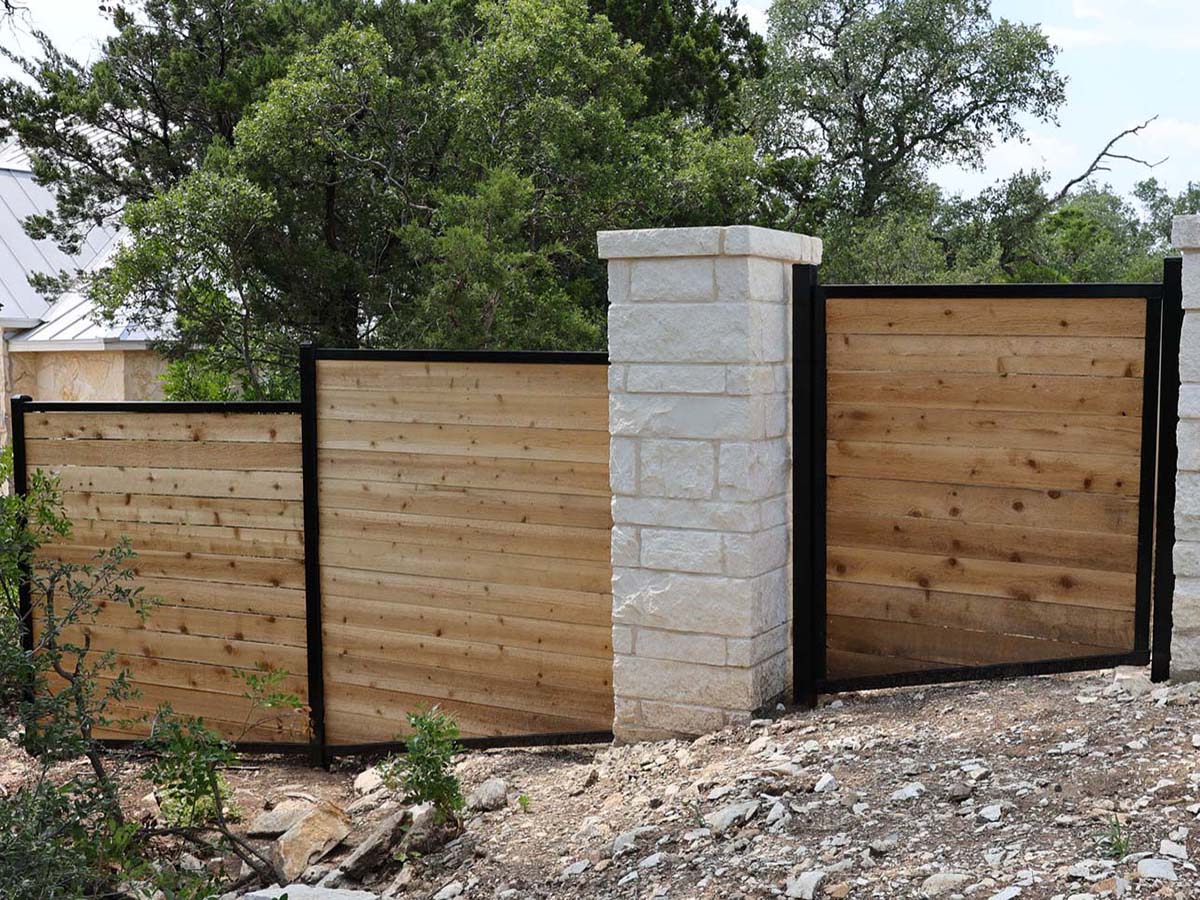All Categories
Featured

Among the most preferred alternatives, timber, plastic, and aluminum each offer one-of-a-kind advantages and disadvantages. Here's a break down of the pros and cons of these three usual fencing products.
Timber Secure Fencing. Wood fencing has actually been a classic option for house owners as a result of its all-natural appeal and convenience.
Pros:. Visual Charm: Timber supplies a traditional and cozy look that complements a selection of architectural designs. Adjustable: It can be painted, tarnished, or reduce into unique layouts to match personal choices. Economical: Originally, wood secure fencing can be an inexpensive alternative compared to various other products. Eco-Friendly: Timber is an eco-friendly resource and can be sustainably sourced. Disadvantages:. High Upkeep: Wood needs routine securing, discoloration, or painting to avoid rot, insect damages, and weathering. Durability Problems: Without proper care, wood can warp, split, or degeneration with time, specifically in locations with high moisture. Much shorter Life expectancy: A timber fence usually lasts 10-20 years, depending upon the kind of timber and level of upkeep. Timber is perfect for those who value a typical look and want to dedicate to its maintenance.
Plastic Fencing. Plastic is a contemporary, low-maintenance fencing option that has grown in appeal in recent times.

Pros:. Low Upkeep: Plastic does not require painting, staining, or sealing and can be conveniently cleansed with soap and water. Weather condition Resistant: It endures severe weather without deteriorating, rusting, or bending. Resilient: Vinyl fencings can last 20-30 years with minimal maintenance. Range of Styles: Available in many shades, layouts, and appearances, some plastic alternatives imitate the look of timber. Disadvantages:. Higher Upfront Price: Vinyl fence can be more costly initially contrasted to wood. Brittleness in Cold Weather: In severe chilly, vinyl might crack or become fragile. Restricted Fixes: Individual panels can be difficult to change, needing careful matching to the existing fencing. Vinyl is best fit for house owners seeking a resilient, low-maintenance remedy with modern-day looks.
Aluminum Fencing. Light weight aluminum fence is a lightweight and sturdy option, often selected for its modern appearance and adaptability.
Pros:. Rust-Resistant: Light weight aluminum doesn't corrosion, making it an exceptional selection for damp or moist environments. Reduced Upkeep: Requires minimal maintenance and is very easy to clean. Sturdy: While light-weight, aluminum is solid enough to hold up against lots of ecological problems. Lengthy Lifespan: Can last a number of years without significant wear or wear and tear. Selection of Styles: Supplies a streamlined and elegant appearance, often made use of for decorative or ornamental objectives. Disadvantages:. Higher Expense: The preliminary financial investment for light weight aluminum secure fencing is more than timber or vinyl. Less Privacy: Light weight aluminum fencings are usually made with open pickets, making them much less efficient for privacy. Susceptible to Dents: Although durable, aluminum can be nicked by strong influences. Aluminum is excellent for those seeking a stylish, lasting alternative that needs marginal care.
Making the Right Selection. Each secure fencing material-- timber, light weight aluminum, and plastic-- supplies distinctive benefits and drawbacks. Your choice needs to depend on your certain top priorities, such as spending plan, maintenance choices, climate, and aesthetic goals:
If you like a typical look and don't mind normal upkeep,Pick timber. Go with vinyl if you desire a low-maintenance, weather-resistant fencing with modern charm. Choose aluminum if you prioritize durability, corrosion resistance, and a streamlined layout. By considering these disadvantages and pros, you can choose a fencing material that improves your building while satisfying your practical needs.
Latest Posts
Experience Enduring Self-confidence with Bath Fitter Metro Detroit
Published May 14, 25
1 min read
Why Holistic Marketing Wins in a Fragmented World
Published May 14, 25
1 min read
Discover Vision Restoration Locally – Eye Center South Experts
Published May 14, 25
1 min read